 February 10, 2022 John E. Ross, KD8IDJ, Editor
| ||||||
HamCation® is February 10 - 13, 2022. Visit www.arrl.org/expo.
APRS Developer Bob Bruninga, WB4APR, SK The father of the Automatic Packet Reporting System (APRS), Bob Bruninga, WB4APR, of Glen Burnie, Maryland, died on February 7. An ARRL Life Member, Bruninga was 73. According to his daughter, Bruninga succumbed to cancer and the effects of COVID-19. Bruninga had announced his cancer diagnosis in 2020. Over the years, While best known for APRS, Bruninga, a retired US Naval Academy senior research engineer, had an abiding interest in alternative power sources, such as solar power. In 2018, he authored Energy Choices for the Radio Amateur, published by ARRL, which explores developing changes in the area of power and energy and examines the choices radio amateurs and everyone else can make regarding home solar power, heat pumps, and hybrid and electric vehicles. Bruninga drove an all-electric car and had experimented with a variety of electric-powered vehicles over the years. What became APRS had its origins in 1982, when Bruninga wrote his first data map program that plotted the positions of US Navy ships for the Apple II platform. A couple of years later, he developed what he called the Connectionless Emergency Traffic System (CETS) on the VIC-20 and C-64 platforms for digital packet communications to support an endurance race. The program was ported to the IBM PC platform in 1988 and was renamed APRS in 1992. The recognized ARRL Contributing Editor Ward Silver, N0AX, remembered Bruninga this way: "Bob kept pushing APRS beyond its origins as a position reporting system. He developed and helped implement numerous other uses of APRS in support of what has become the 'Ham Radio of Things,' with great potential for future amateur radio applications. Bob's far-reaching vision and imagination were as good as it gets."
Amateur Radio on the International Space Station (ARISS) ARRL liaison Rosalie White, K1STO, recalled that Bruninga attended many ARISS-International meetings and contributed "enormously" to ARISS APRS activities, leading a team in developing protocols and software for rapid message exchange via a packet "Robot." Last year, ARRL CEO David Minster, NA2AA, on behalf of ARRL, honored Bruninga with a brick in ARRL's Diamond Club Terrace at ARRL Headquarters. Read an expanded version. Dayton Hamvention Looks to Be a Go for 2022 Hams and vendors hoping to attend Dayton Hamvention® 2022 have been asking what, if any, COVID-19 regulations will be in place at the event. Hamvention management says it's monitoring the situation closely. Hamvention General Chairman Rick Allnutt, WS8G, issued a statement: "We strongly anticipate that Hamvention 2022 is a go. We cannot guarantee what government may decide about unknown changes in the pandemic. It has become obvious that the State of Ohio is very unlikely to call a halt to large gatherings anytime soon. Despite a recent large spike in [Omicron-variant] COVID cases and Allnutt added that he anticipates that the official state guidance may be to recommend -- not require -- face masks and social distancing, but does not expect to be checking attendees' vaccination status on site. Hamvention will support state guidance. Some have asked whether COVID-19 testing will be available at Hamvention. At this time, there are no plans to have testing on site. Updates on Hamvention and COVID-19 regulations related to the event will be posted on the Hamvention website. Hamvention, an ARRL-sanctioned event, will be held May 20 - 22, at the Greene County Fairgrounds and Expo Center in Xenia, Ohio. ARRL Podcasts Schedule
The On the Air and Eclectic Tech podcasts are sponsored by Icom. Both podcasts are available on iTunes (iOS) and Stitcher (Android) as well as on Blubrry -- On the Air | Eclectic Tech. Some New Rules Going into Effect this Year for ARRL Field Day After taking a few detours over the past couple of years due to the COVID-19 pandemic, ARRL Field Day rules are being updated on a permanent basis starting this summer. ARRL conducted a Field Day community survey with invitations propagated far and wide, and direct emails sent to more than 15,000 individuals and ARRL-affiliated clubs. After sorting through, reviewing, and discussing the survey results, the ARRL Programs and Services Committee recommended a number of Starting this year, the maximum PEP output for a transmitter used by anyone submitting a Field Day log will be 100 W. The power multiplier of 2 will remain in place, and the high-power category will be removed from the rules. Until this year, the maximum low-power limit had been 150 W for most ARRL-sponsored operating events. The power multiplier will remain at 5 for QRP participants running a maximum of 5 W or less. As previously announced, 100 W is now the low-power category limit for all ARRL and IARU HF Contests, effective January 1, 2022. A couple of changes instituted initially as accommodations for the COVID-19 pandemic will remain. Class D (Home) stations will continue to be able to earn points for contacts with other Class D stations. The club aggregate scoring change initiated in 2020 as a temporary measure will become part of the permanent rules. In the aggregate scoring plan, the scores of individual stations are combined under the score of a single club. Another change, involving Rule 7.3.2 Media Publicity, has been modified. Rules to date have offered 100 bonus points for attempting to obtain publicity and demonstrating same. With the ease of posting via Facebook, Twitter, Instagram, and various other media websites, Field Day participants will now be required to obtain publicity, not just try to do so. Any combination of bona fide media hits would qualify for the bonus points. For example, posting the details of your upcoming or ongoing Field Day activity, or your Field Day results, on a club or news media site, on Facebook, or via Twitter and Instagram would meet the bonus criteria. Photos and videos are encouraged as part of media posts. ARRL Announces New World Wide Digital Contest The ARRL World Wide Digital Contest will debut at 1800 UTC on June 4, ending at 2359 on June 5, 2022. All non-RTTY modes are permitted. Going forward, RTTY will be the sole mode for the ARRL RTTY Roundup, which will continue to take place in January. In broad strokes, this will be an HF to 6-meter event, on 160, 80, 40, 20, 15, 10, and 6 meters, with single-operator and multi-single entry categories. These are Single Operator, One Radio (SO1R), Single Operator, Two Radio (SO2R), and Multi-Single (MS). Overlays in the single-operator categories will include "all enclosed antennas" and "maximum of 8 operating hours." Single-operator entries may operate for 24 hours (with off times taken in one or two breaks that are at least 60 minutes long), while MS entries may operate for the full 30 hours.
Power categories will be:
The exchange for the World Wide Digital Contest will be a station's four-character grid square designation. Stations may work each other once per band, regardless of digital mode. Participants will earn 1 point for each contact, plus 1 point for each 500 kilometers (310 miles) between stations. So, a contact between stations 1,000 kilometers apart would be worth 3 points. The total score is total contact points. ARRL makes available a grid-center distance calculation tool. Options include kilometers (always rounded up), distance between pairs, and points. For instructions on how to submit logs, visit the ARRL Contest page. Logs will be due 7 days after the event has concluded. In succeeding years, the World Wide Digital Contest will take place on the first full weekend of June. Full details on the new operating event are on the ARRL website. Three SpaceX Crew-4 Crew Members Hold Ham Licenses Three of the four crew members in the SpaceX Crew-4 launch to the International Space Station (ISS) are amateur radio licensees. They are Robert Hines, KI5RQT; Kjell Lindgren, KO5MOS; and Samantha Cristoforetti, IZ0UDF. Lindgren and Cristoforetti have served previously on the ISS. Crew-4 is set to launch on April 15 for a 6-month stay. Crew-4 will be the fourth crew rotation mission of SpaceX's human space transportation system and its fifth flight with astronauts,
including the Demo-2 test flight, to the space station through NASA's Commercial Crew Program. The mission will launch on a SpaceX Crew Dragon spacecraft and Falcon 9 rocket from Launch Complex 39A at NASA's Kennedy Space Center in Florida. Last week, NASA and its international partners approved crew members for Axiom Space's first private astronaut mission to the ISS. Called Axiom Mission 1 or Ax-1, the flight is targeted to launch on March 30, from Launch Complex 39A at Kennedy Space Center on a SpaceX Falcon 9 rocket. The Ax-1 crew will fly on Crew Dragon Endeavour to and from the space station. After 10 days in orbit, the Ax-1 crew will splash down off the coast of Florida. Axiom Space astronauts Michael López-Alegría, Larry Connor, Mark Pathy, and Eytan Stibbe are prime crew members of the Ax-1 mission. The quartet is scheduled to spend 8 days aboard the ISS, conducting science, education, and commercial activities before returning to Earth. "This represents another significant milestone in our efforts to create a low-Earth orbit economy," said Phil McAlister, director of commercial spaceflight at NASA. Amateur Radio in the News ARRL Public Information Officers, Coordinators, and many other member-volunteers help keep amateur radio and ARRL in the news.
Heil Sound Changes Hands Heil Sound has changed hands. Founded by Bob Heil, K9EID, and based in Fairview Heights, Illinois, Heil Sound is a manufacturer of microphones, microphone accessories, and audio accessories for both professionals and amateurs. The new owners are Heil Sound President and CEO Ash Levitt and Director of Operations Steve Warford. Sarah Heil, who was co-owner of Heil Sound, has retired, but "My life has been about achieving great sound, whether on the concert stage or in the amateur radio world," Bob Heil recounted. "I've watched Heil Sound go from a regional sound company to a world-class microphone manufacturer. This company has been my passion, but it is time for me to step aside. There is no better team to carry the company forward than Ash and Steve, and I have the utmost confidence in them." Heil Sound is a name well known within the worldwide amateur radio community for its microphones and "boom set" microphone/headset combinations. The company marked its 50th anniversary in 2016. The company began in 1966 as Ye Olde Music Shoppe -- a music store in Marissa, Illinois, Heil's hometown. Heil initially made a name for himself working with music performers to provide sound reinforcement for their live gigs, initially supplying full sound system packages for venues and festivals throughout the Midwest and later working with world-class acts such as Humble Pie,
The Who, The Grateful Dead, and Joe Walsh, WB6ACU. Heil said it was the Dead's Jerry Garcia who suggested the Heil Sound name. Among other innovations, Heil created the quadraphonic sound system for The Who's "Quadrophenia" tour as well as the Heil Talk Box, made famous by Joe Walsh and Peter Frampton. Levitt and Warford both started working with Heil Sound as teenagers, building and packaging products. Levitt took a different career path in academia for several years but continued to regularly consult with Heil Sound. He returned to Heil Sound full time in 2017 and assumed the role of president in 2020. Warford worked his way up in the company over the course of his tenure and, for the past several years, has been responsible for daily operations. "Steve and I are honored to carry forward the legacy of Heil Sound," Levitt said. "We care very deeply about Heil Sound's role in the industry and intend to build on that going forward with new products and greater distribution. Read an expanded version. Announcements
Getting It Right! To clarify the "In Brief" item, "Webinar Set to Discuss Amateur Radio and AUXCOM Support to Department of Defense," in the February 3 edition of The ARRL Letter, the text should have said, "On February 18 at 0100 (the evening of Thursday, February 17, in North American time zones)..." The K7RA Solar Update Tad Cook, K7RA, Seattle, reports: Three new sunspot groups appeared this week, on February 3, 6, and 8. Average daily sunspot number rose slightly from 81.3 last week to 83.9 in this reporting week, February 3 - 9. Average daily solar flux increased modestly, from 123.1 to 126.
A geomagnetic storm on February 4 brought down 40 of the low-Earth orbit Starlink satellites, even though the storm was not especially robust. But from February 3 - 4, the high latitude college A index measured near Fairbanks, Alaska, was 48 and 61, a level that assures the appearance of aurora borealis. So far, sunspots were visible every day in 2022. Last year, 64 days had no sunspots, and in 2020, 208 days were spotless, according to Spaceweather.com. Predicted solar flux values for the near term are 120, 118, 110, 115, 118, and 112 on February 10 - 15; 115 on February 16 - 19; 118 on February 20; 120 on February 21 - 23; 125 on February 24 - 25; 120 on February 26 - March 4; 115 and 122 on March 5 - 6; 120 on March 7 - 9; 110 on March 10 - 11, and 115 on March 12 - 18. Predicted planetary A index is 25, 20, 12, 18, and 25 on February 10 - 14; 20, 12, 10, 12, and 8 on February 15 - 19; 5, 10, 8, 5, 8, and 12 on February 20 - 25; 8 on February 26 - 27; 5 on February 28 - March 2; 12, 10, 15, and 10 on March 3 - 6; 5 on March 7 - 11; 25 and 20 on March 12 - 13; 5 on March 14 - 15, and 10 and 12 on March 16 - 17. Here are some images of recent sunspot regions. Sunspot numbers for February 3 - 9 were 84, 87, 91, 83, 78, 86, and 78, with a mean of 81.3. The 10.7-centimeter flux was 126.5, 129.6, 125.9, 123.6, 127.2, 123.1, and 125.9, with a mean of 123.1. Estimated planetary A indices were 27, 32, 12, 15, 7, 5, and 3, with a mean of 10.1. Middle latitude A index was 18, 18, 10, 12, 4, 3, and 2, with a mean of 6.4. A comprehensive K7RA Solar Update is posted Fridays on the ARRL website. For more information concerning radio propagation, visit the ARRL Technical Information Service, read "What the Numbers Mean...," and check out the Propagation Page of Carl Luetzelschwab, K9LA. A propagation bulletin archive is available. For customizable propagation charts, visit the VOACAP Online for Ham Radio website. Share your reports and observations. Just Ahead in Radiosport
Upcoming Section, State, and Division Conventions
ARRL -- Your One-Stop Resource for
Subscribe to...
Free of charge to ARRL members...
| ||||||
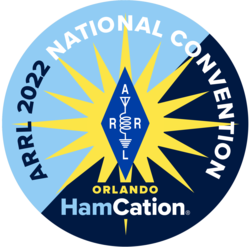
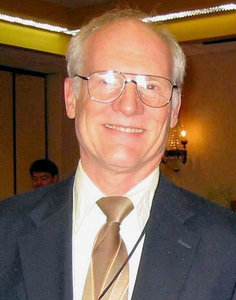 Bruninga readily shared his broad knowledge and experience in APRS and other topics in the amateur radio and electronics fields.
Bruninga readily shared his broad knowledge and experience in APRS and other topics in the amateur radio and electronics fields.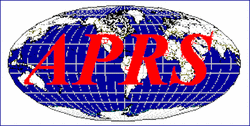 North American APRS frequency is 144.39 MHz and APRS is linked globally via the internet. Bruninga founded the Appalachian Trail Golden Packet event, which fields APRS nodes from Stone Mountain in Georgia to Mount Katahdin in Maine each July.
North American APRS frequency is 144.39 MHz and APRS is linked globally via the internet. Bruninga founded the Appalachian Trail Golden Packet event, which fields APRS nodes from Stone Mountain in Georgia to Mount Katahdin in Maine each July..jpg) Bruninga mentored US Naval Academy midshipmen in building and launching amateur radio satellites and CubeSats, beginning with PCSat in 2001. PCSat was the first satellite to report its precise position directly to users via its onboard GPS module. Subsequent USNA spacecraft included PSK-31 capability (HF to UHF) and other innovations.
Bruninga mentored US Naval Academy midshipmen in building and launching amateur radio satellites and CubeSats, beginning with PCSat in 2001. PCSat was the first satellite to report its precise position directly to users via its onboard GPS module. Subsequent USNA spacecraft included PSK-31 capability (HF to UHF) and other innovations. hospitalizations, there is no move to restrict large indoor or outdoor events such as sports events," Allnutt said.
hospitalizations, there is no move to restrict large indoor or outdoor events such as sports events," Allnutt said..jpg) YouTube is increasingly becoming the "go-to" resource for information on a variety of amateur radio topics. The latest episode of the On the Air podcast (Episode 26) features a conversation with two YouTube veterans -- Dave Casler, KE0OG, and Steve Goodgame, K5ATA.
YouTube is increasingly becoming the "go-to" resource for information on a variety of amateur radio topics. The latest episode of the On the Air podcast (Episode 26) features a conversation with two YouTube veterans -- Dave Casler, KE0OG, and Steve Goodgame, K5ATA..jpg) The latest edition of the Eclectic Tech podcast (Episode 53) features a discussion about the 222 MHz band with ARRL Radiosport Manager Bart Jahnke, W9JJ.
The latest edition of the Eclectic Tech podcast (Episode 53) features a discussion about the 222 MHz band with ARRL Radiosport Manager Bart Jahnke, W9JJ. rule changes for ARRL Field Day, which will take place this year over the June 25 - 26 weekend.
rule changes for ARRL Field Day, which will take place this year over the June 25 - 26 weekend. Operating assistance is permitted for all operating categories.
Operating assistance is permitted for all operating categories.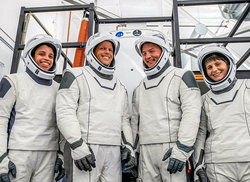
 Bob Heil will continue to do outreach work and amateur radio product design as Founder and CEO Emeritus.
Bob Heil will continue to do outreach work and amateur radio product design as Founder and CEO Emeritus.
 February 13 is World Radio Day, proclaimed in 2011 by the member states of UNESCO and adopted by the UN General Assembly in 2012.
February 13 is World Radio Day, proclaimed in 2011 by the member states of UNESCO and adopted by the UN General Assembly in 2012.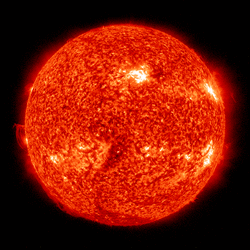 Solar flares and geomagnetic storms throughout the week raised the average daily planetary A index from 10.1 to 14.4, and the middle latitude A index, measured at one location in Virginia, went from 6.4 to 9.6.
Solar flares and geomagnetic storms throughout the week raised the average daily planetary A index from 10.1 to 14.4, and the middle latitude A index, measured at one location in Virginia, went from 6.4 to 9.6.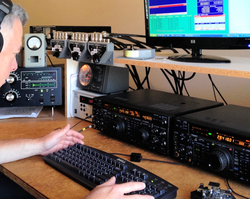 February 12 - 14 -- YLRL YL-OM Contest (CW, phone, digital)
February 12 - 14 -- YLRL YL-OM Contest (CW, phone, digital)







